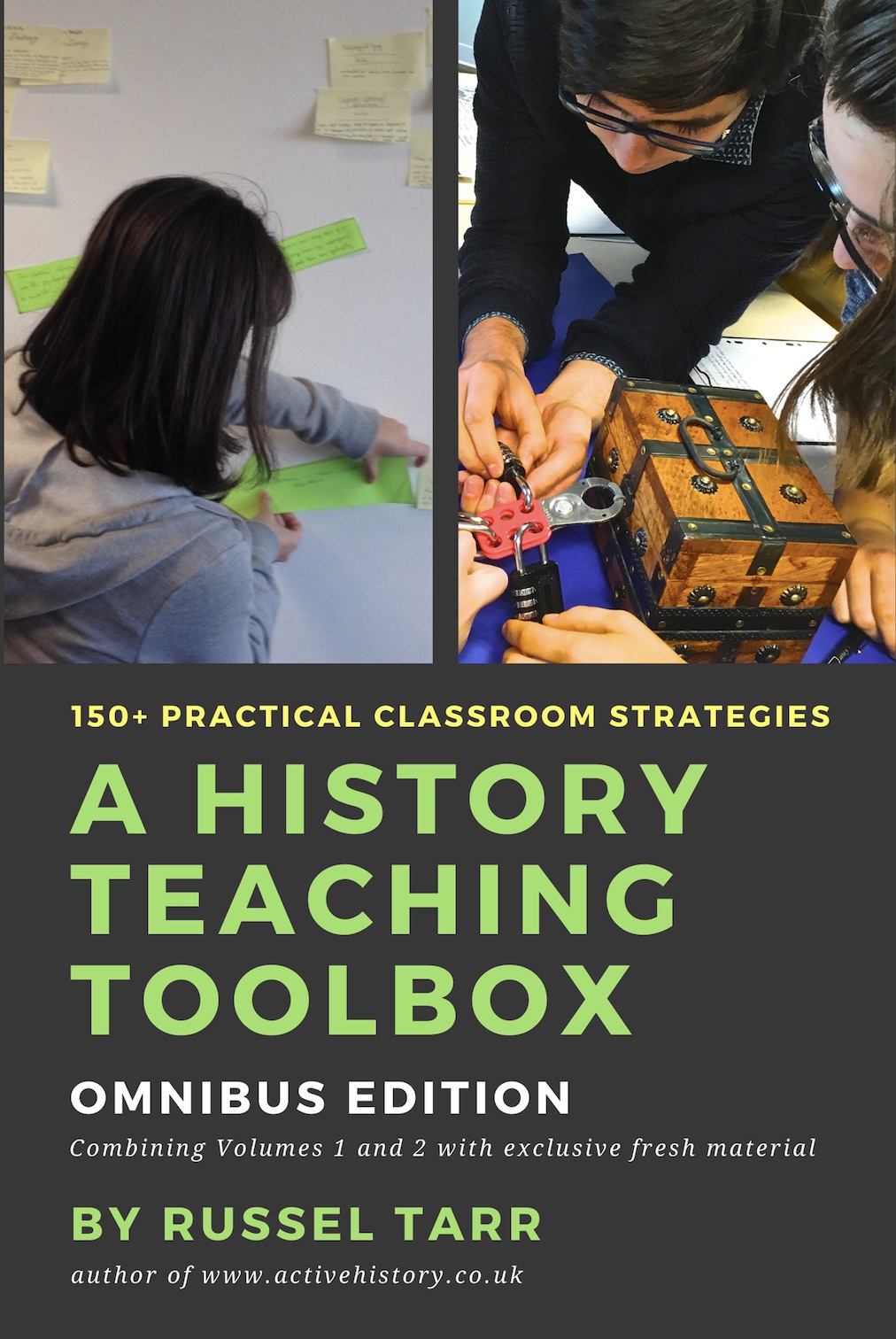Transform your history classroom
ActiveHistory provides educational, award-winning interactive simulations, decision-making games, self-marking quizzes, high-quality worksheets and detailed lesson plans for the school history classroom. All resources have been designed by full-time history teacher Russel Tarr.
An ActiveHistory subscription provides everything you need to construct and deliver a History course from start to finish for the entire 11-18 age range!
These consist not just of lesson plans, worksheets and teacher notes, but also multimedia lectures and interactive games and historical simulations ideal for remote learning and self-study.
World History teaching resources for the high school classroom: lesson plans, worksheets, quizzes and simulation games for KS3, IGCSE, IB and A-Level teachers.
B. How is History produced?
 Sources
Sources
a. How trustworthy is the witness?
Consider the PACT - Purpose / Author / Context / Tone
Example : the major source of the Norman Conquest is the Bayeux Tapestry (produced by Normans) and the Anglo-Saxon Chronicle (by Saxons). These need to be compared and contrasted to get towards the “truth”.
b. How typical is the witness?
▪ Sources which survive are by their nature unrepresentative.
▪ Sources which have been lost leave major gaps in the record:
- Decay: People, Documents, Artefacts
- Destruction - Unintentional (Fire of London, 1940 Blitz);
- Destruction - Intentional (Shredding documents / Official Secrets)
Example : Historically, we know far less about poor, working class people (especially women and children) than we do of the ruling classes, who leave behind much more evidence due to their power, wealth and literacy.
+ Historian
c. How relevant is the witness?
▪ The historian needs to:
- Select evidence to use, based on what questions need answering
- Interpret and present the evidence to the public
▪ This process of selection and interpretation distorts the process even further. The historian will have their own views and preoccupations, formed by upbringing, social background, and current affairs; this will determine the questions they choose to investigate, the evidence they choose to focus on to provide answers, the interpretation which they put on that evidence and even the words they use (“one man’s terrorist is another man’s freedom fighter”). It is in this context that it has been said that "all history is contemporary history" (Croce).
= "History"
▪ Firstly, some evidence has been lost; some destroyed; the remainder is unrepresentative at best, unreliable at worst!
▪ Then, historians are thrown into the mix: they will use their imagination to fill gaps in the record, select the bits of evidence which they think are the most interesting or relevant, then interpret and present that evidence to the public.
| < Prev | Next > |

© 1998-2025 Russel Tarr, ActiveHistory.co.uk Limited (Reg. 6111680)
1 Torrin Drive, Shrewsbury, Shropshire, SY3 6AW, England
Privacy Policy | Contact






